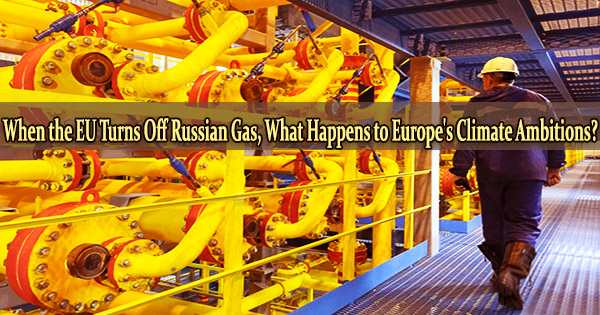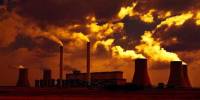1.5 degrees, 2 degrees or more? The war in Ukraine has delayed the implementation of the Paris Agreement and the climate ambition of a carbon-neutral EU in 2050. Or have they?
According to recent research from Aarhus University, the Eurozone’s extremely high gas prices are a very effective catalyst for the shift to a green economy.
Researchers from the Department of Mechanical and Production Engineering at Aarhus University started calculating the long-term impacts of shutting off Russian gas for the decarbonization of the European energy grid just a few days after Russia started its assault against Ukraine.
The study, which was just published in the academic journal Joule, is based on a high-resolution model of the whole European energy system, including gas-dependent sectors.
According to the research, depending on the degree of ambition in the long-term objectives of the Paris Agreement to control the rise in global temperatures, shutting off the gas could actually have a substantial impact.
Politically, the goal has been to keep the temperature increase to a maximum of 2 degrees Celsius and to aim toward a limit of 1.5 degrees since the Paris Agreement was signed in 2015.
A reduction in Europe’s total gas supply could help accelerate the upscaling of renewable energy sources, provided countries uphold their climate ambitions. If not, we simply risk that other fossil fuels will replace gas in the interim period towards full decarbonization.
Gorm Bruun Andresen
The Ukraine War has seriously undermined the strategy, which called for replacing coal with gas during a transitional period. Associate professor at Aarhus University, Gorm Bruun Andresen, is one of the researchers behind the article, and he says:
“Russia is the biggest supplier of gas to Europe, and in 2019, 34 per cent of the Eurozone’s gas consumption came from Russia. With the phasing out of Russian gas, we no longer have enough gas for this so-called transition phase. This means that we have to choose between investing in the immediate installation of large amounts of wind and solar energy or falling back on the other options, including coal. The first scenario aligns well with a very ambitious climate strategy, and it will very quickly alleviate Europe’s dependence on imported gas. However, the second scenario actually makes it difficult to honour the Paris Agreement at all,” he says.
The researchers’ model demonstrates the European energy system’s least expensive and most cost-effective routes to the 1.5-degree and 2-degree scenarios, respectively. The model demonstrates how high gas prices are prompting Europeans to switch from gas-fired systems to heat pumps.
This transformation will significantly affect the green transition, which is in favor of the 1.5-degree target given that the heating sector makes up around one-third of all European gas use.
“It’s interesting that this implies that the price of gas is a driver of what European politicians have been talking about for years. That’s not to say that the gas price and restructuring the heating sector are enough for the 1.5-degree scenario. By any means. But it drives the green transition forward to a far greater extent than using gas in a transitional phase,” says Gorm Bruun Andresen.
Ebbe Gøtske, who is a PhD student at Aarhus University and is researching renewable energy sources in a European context, notes that now it is important to focus on the climate ambitions of the European countries:
“A reduction in Europe’s total gas supply could help accelerate the upscaling of renewable energy sources, provided countries uphold their climate ambitions. If not, we simply risk that other fossil fuels will replace gas in the interim period towards full decarbonization,” he says.
The model’s developers are open about their belief that aiming for an ambitious plan and keeping the increase in global temperature to 1.5 degrees will lead to European energy security the fastest.
“But this requires a massive roll-out of renewable energy sources in the form of solar and wind,” says Ebbe Gøtske and continues: “We need to install approx. 400 GW per year in the years 2025-2035, and this will be a huge challenge for European politicians.”
















